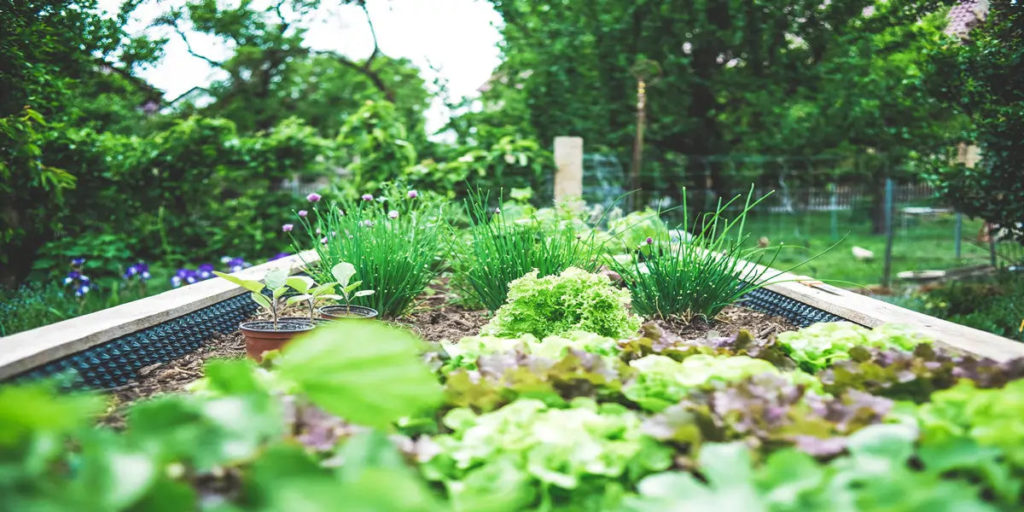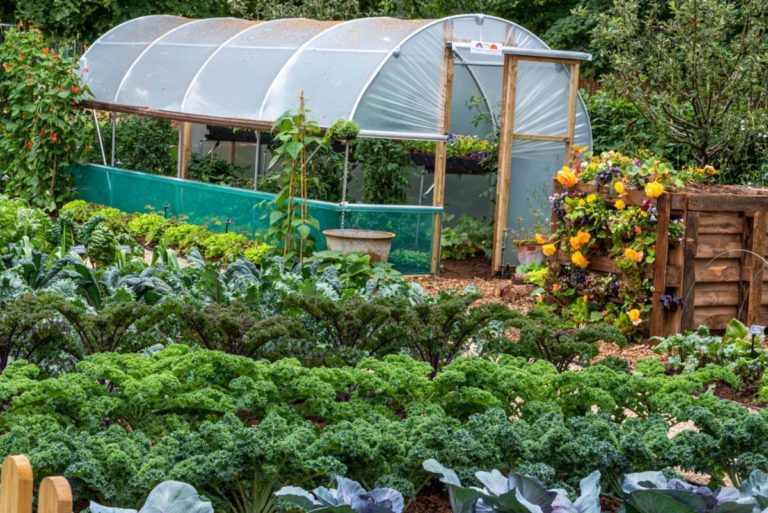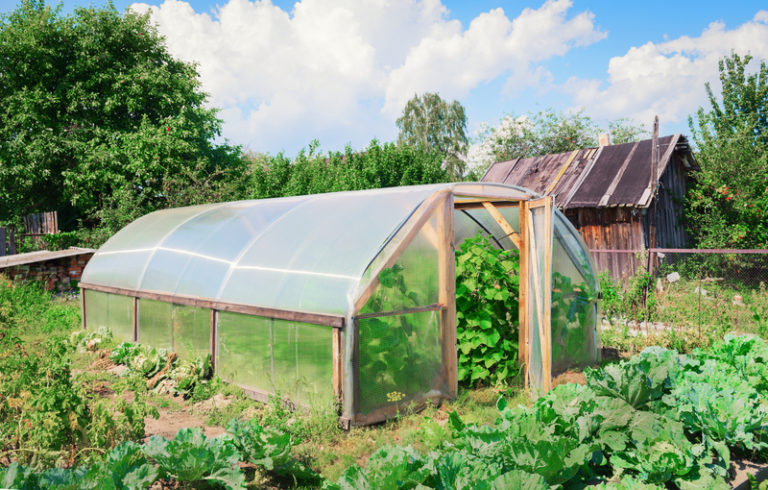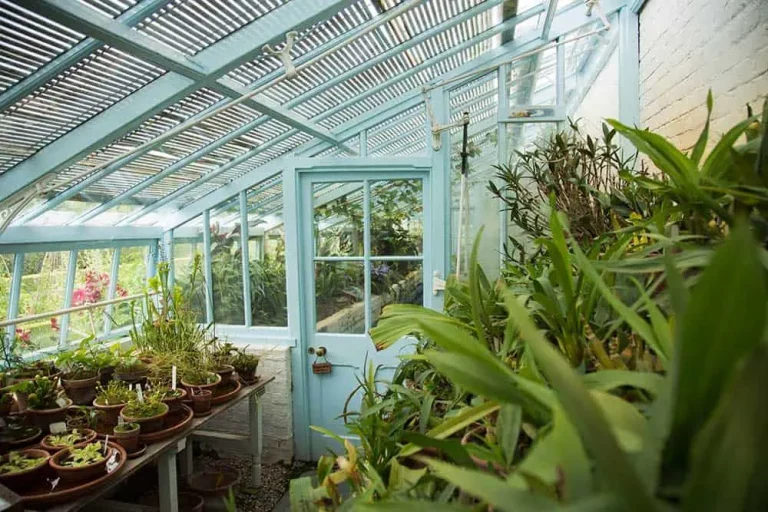Spring is here, and it’s the perfect time to start planting herbs for a bountiful harvest.
Whether you’re looking to add some flavor to your cooking or want to experiment with herbal remedies, there are several herbs that thrive in the spring season.
We’ll explore the best herbs to plant in spring and provide actionable tips for maximizing their yield.
From delicious culinary herbs like basil and cilantro to medicinal herbs like ginger and echinacea, you’ll find plenty of options to enhance your garden and your well-being.
So let’s dive in and discover the best spring herbs for a successful harvest!
Choose the right herbs
Select herbs that thrive in spring weather conditions, such as basil, mint, cilantro, and parsley.
Basil, mint, cilantro, and parsley are all excellent options that not only grow well in the spring, but also add delicious flavors to your dishes.
Basil, for example, is a warm-season herb that does particularly well in the spring, with its sweet and pungent flavor enhancing a variety of dishes from pesto to salads.
Mint, on the other hand, is a hardy herb that can tolerate a bit of shade and moisture, making it an excellent choice for partial shade or even indoor growing in the spring.
Cilantro, with its delicate flavor and fast growth rate, is also a great choice for spring gardening, while parsley is a versatile herb that adds a subtle, minty flavor to dishes and is easy to grow in the spring.
By choosing the right herbs for the season, you can ensure a bountiful harvest and enjoy fresh, flavorful ingredients throughout the spring season.
Start with healthy seedlings
Purchase seedlings from a reputable nursery or start your own seedlings indoors 2-3 weeks before the last frost date in your area.
Starting with healthy seedlings is a important step in successfully growing a garden.
To ensure the best possible start, purchase seedlings from a reputable nursery or start your own seedlings indoors 2-3 weeks before the last frost date in your area.
This head start will give your seedlings a strong foundation, allowing them to quickly adapt to their new environment and thrive.
When selecting seedlings from a nursery, look for stock that is well-watered and free of pests or diseases.
Avoid seedlings that are pot-bound or have weak, spindly growth.
For indoor starting, use seed trays or small pots with a soilless growing mix and provide adequate light and temperature control.
Keep the soil consistently moist but not waterlogged, and maintain a comfortable temperature range of 65-75 degrees Fahrenheit.
With proper care, your seedlings will develop strong roots and sturdy stems, setting the stage for a productive and thriving garden.
Plant at the right time
Wait until the soil is warm and the threat of frost has passed before planting your herbs outdoors.
When it comes to planting herbs outdoors, timing is everything.
It’s important to wait until the soil has warmed up and the threat of frost has passed before transplanting your herbs into the garden.
This is because herbs are sensitive to cold temperatures and frost can damage or kill them.
So, if you live in an area with a cold climate, it’s best to wait until the soil has warmed up to at least 60°F (15°C) before planting your herbs outdoors.
This will give your herbs the best chance to establish a strong root system and thrive in their new environment.
Waiting until the threat of frost has passed will ensure that your herbs are not subjected to any damage from frost or freezing temperatures.
By planting your herbs at the right time, you’ll be able to enjoy a bountiful harvest of healthy, vibrant herbs all season long.
Provide adequate sunlight
Most herbs prefer at least 4-6 hours of direct sunlight per day.
Providing adequate sunlight is important for your herb garden’s health and growth.
Most herbs prefer at least 4-6 hours of direct sunlight per day, so position your herb plants in a spot that receives plenty of natural light.
Direct sunlight not only promotes photosynthesis, but it also helps to prevent fungal diseases and pests that thrive in shady conditions.
Consider rotating your herb plants periodically to ensure each plant receives an equal amount of sunlight.
If you can’t provide direct sunlight, consider using grow lights to supplement natural light.
Remember to adjust the intensity and duration of light according to the specific herb varieties you’re growing, as some herbs are more sensitive to light than others.
By providing adequate sunlight, you’ll encourage healthy growth and bountiful harvests.
Use well-draining soil
Herbs prefer well-draining soil that is rich in organic matter.
When it comes to growing herbs, using well-draining soil is essential for their health and success.
Herbs prefer well-draining soil that is rich in organic matter, as this type of soil provides the right balance of moisture and oxygen that they need to thrive.
Well-draining soil is soil that is loose and porous, allowing water to drain quickly and preventing the soil from becoming waterlogged.
This is important because herbs are susceptible to root rot and other problems if their roots are consistently waterlogged.
To create well-draining soil, mix in plenty of organic matter such as compost, leaf mold, or peat moss.
These materials help to loosen the soil and improve its drainage, creating an ideal environment for herbs to grow.
Avoid using heavy clay soils or soil that contains high amounts of sand, as these can be difficult for herbs to grow in.
By using well-draining soil, you can ensure that your herbs receive the right amount of moisture and oxygen, leading to healthy and productive growth.
Water consistently
Water your herbs deeply once or twice a week, depending on weather conditions.
Watering your herbs consistently is important for their health and growth.
The frequency of watering will depend on the specific weather conditions in your area.
If it’s hot and dry, your herbs may need to be watered more frequently, such as every day or every other day.
On the other hand, if it’s cool and rainy, you may only need to water your herbs once or twice a week.
It’s important to note that overwatering can be just as harmful as underwatering, so it’s important to pay attention to the soil moisture and only water when the top inch of soil feels dry to the touch.
To ensure proper watering, it’s best to check the soil moisture by sticking your finger into the soil up to the second knuckle.
If the soil feels dry, it’s time to water.
If the soil feels damp or wet, you can wait another day or two before watering again.
By consistently watering your herbs deeply and paying attention to weather conditions, you’ll be able to keep your herbs healthy and thriving.
Fertilize regularly
Feed your herbs with a balanced fertilizer once a month to promote healthy growth and maximize yield.
Fertilizing your herbs on a monthly basis is important for promoting healthy growth and maximizing yield.
A balanced fertilizer provides essential nutrients that your herbs need to thrive, such as nitrogen, phosphorus, and potassium.
Without these nutrients, your herbs may suffer from stunted growth, yellowing leaves, and reduced yield.
By fertilizing regularly, you can ensure that your herbs receive the necessary nutrients they need to grow strong and healthy.
Fertilizing regularly can also help to prevent nutrient deficiencies, which can lead to a range of issues, including pest and disease problems.
By investing just a few minutes a month into fertilizing your herbs, you can reap the benefits of a healthy and productive herb garden all season long.
Prune and harvest regularly
Prune your herbs regularly to encourage bushy growth and promote fruiting. Harvest your herbs regularly to encourage continued growth and prevent flowering.
Regular pruning and harvesting are important steps in maintaining healthy and productive herb gardens.
Pruning helps to encourage bushy growth, as it removes any weak or damaged stems and encourages new growth.
This process also helps to promote fruiting, as it allows the plant to focus its energy on producing leaves and flowers rather than seeds.
Harvesting, on the other hand, helps to prevent flowering by removing the mature leaves and encouraging the plant to continue producing new growth.
By regularly pruning and harvesting your herbs, you can ensure that they remain healthy, productive, and flavorful.
Regular harvesting helps to prevent over-flowering, which can lead to a decrease in the quality of the herbs.
Want More? Dive Deeper Here!
Hey there! If you’re the type who loves going down the rabbit hole of information (like we do), you’re in the right spot. We’ve pulled together some cool reads and resources that dive a bit deeper into the stuff we chat about on our site. Whether you’re just killing time or super into the topic, these picks might just be what you’re looking for. Happy reading!






